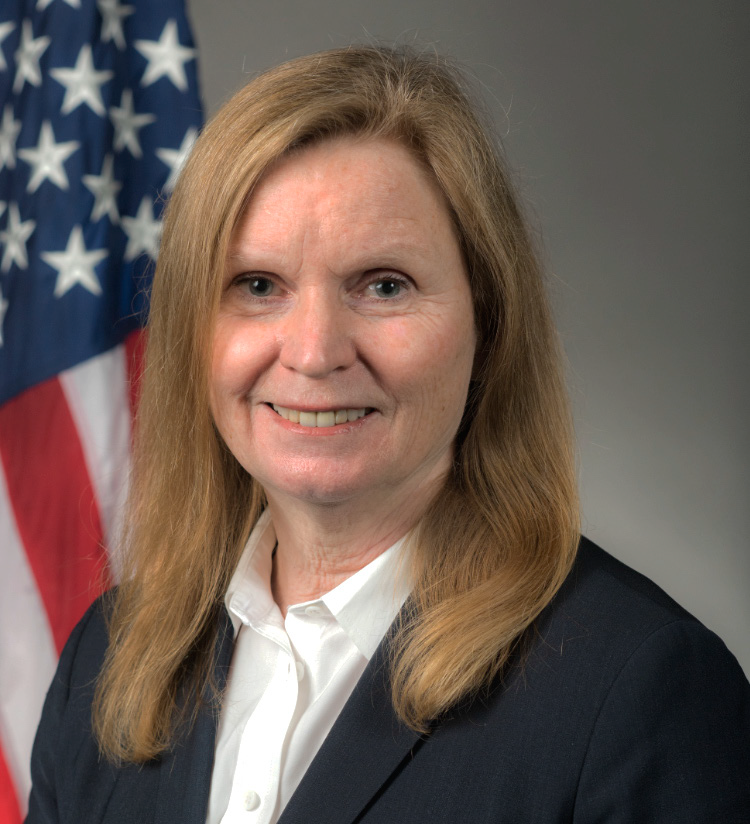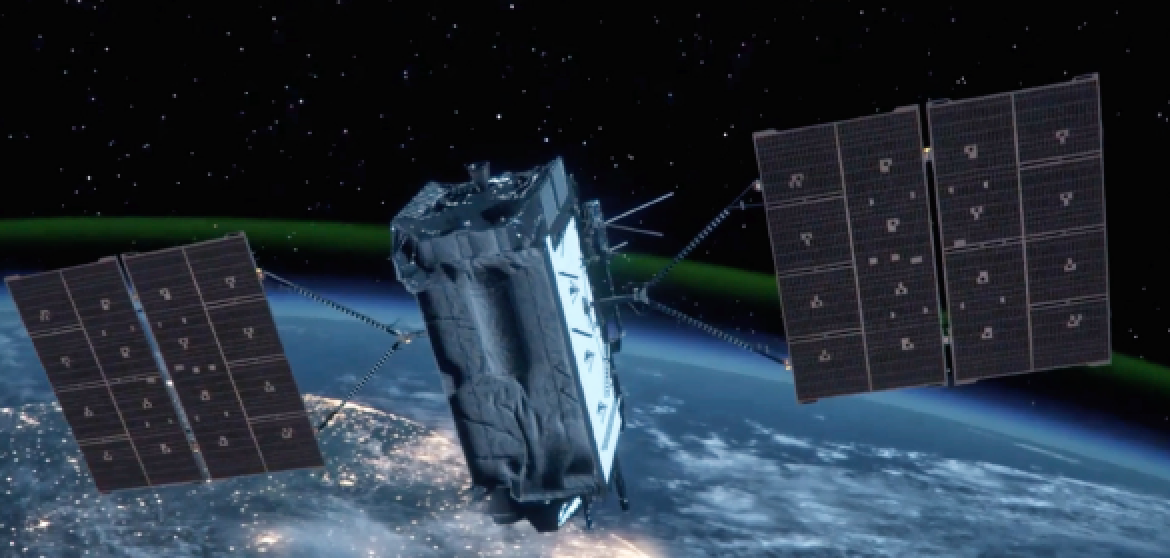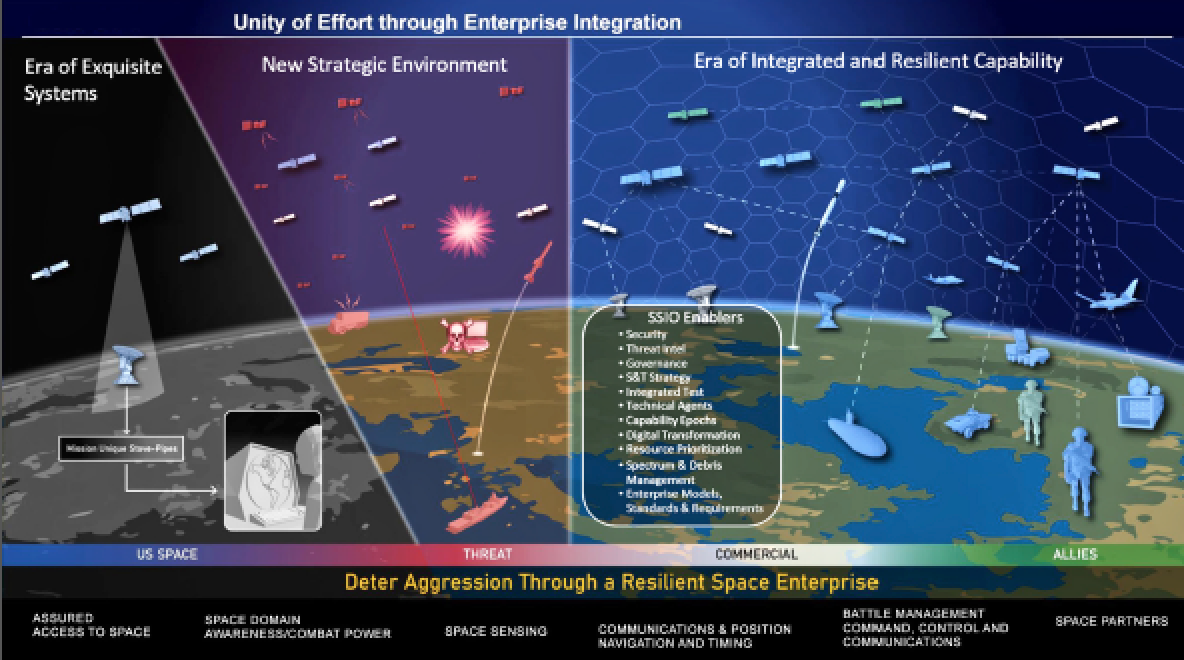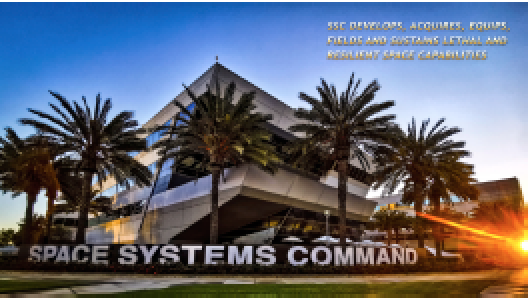For 69 years, Space Systems Command (SSC) and its heritage organizations inconspicuously developed an impressive portfolio of “exquisite” capabilities.

These capabilities have not only given U.S. and allied warfighters a distinct advantage in every war-fighting domain, but also changed everyone’s way of life, around the world.
For most people, this happened out of sight, out of mind, but competitors noticed and are taking action to reduce the U.S. advantage in space.
Competitor actions are dramatically altering the once- benign space environment, necessitating the United States Space Force and its implementation of a new strategy to make it difficult for adversaries to disrupt our space operations. This approach is consistent with the U.S. Department of Defense’s emphasis on integrated deterrence. In a word: resilience.
As the Space Force enters its fourth year of operations, the benefits of the new service are becoming more visible, particularly at SSC.
This includes a focus on 100 percent mission success; satellites and systems delivered on time and on budget; and an increasing launch tempo.

Dr. Clair Leon
A new SSC office was established last year to drive transition to an integrated and resilient space enterprise — the Space Systems Integration Office (SSIO)
— led by Dr. Claire Leon, a senior civilian and government and industry expert.
This is a dynamic time in the space industry with multiple forces driving the need for the SSIO. In order to ensure continuous space operations for the near term, it is necessary to connect systems not originally designed to operate together; and to develop and field advanced space capabilities at an unprecedented speed, Leon said.
This is driving the need for new acquisition organizations such as Space Rapid Capability Office (Space RCO) and Space Development Agency (SDA).
SSIO is chartered to integrate the disparate systems developed by SSC’s Program Executive Officers and mission partners into a resilient and integrated warfighting enterprise that will deter competitor aggression and assure the uninterrupted delivery of all-domain combat power.

SSC’s new space capabilities and systems are pivoting to architectures that are inherently resilient through proliferation and protection.
SSIO will help the Command achieve this transformation through delivery of an integrated investment strategy, an enterprise roadmap and enterprise enablers.
Armed with the mantra of SSC Commander, Lt. Gen. Guetlein to “Exploit what we have; buy what we can; and build only what we must,” the SSIO is driving a great unity of effort across SSC, Space Training and Readiness Command, Space Operations Command, U.S. Space Command, mission partners, industry and allies.
Previously, Leon served as the director of Launch Enterprise at SSC’s predecessor organization, and was responsible for leading the acquisition, integration, development, production, operation and sustainment of the Evolved Expendable Launch Vehicle Program and the Rocket System Launch Program.
In her new role, she is tasked with integrating the acquisition efforts of national security space programs, industry and allied partners into a resilient, U.S. space enterprise.

“In past decades, we were designing ‘exquisite’ systems that were primarily in GEO (Geosynchronous Orbit) with some at MEO (Medium Earth Orbit); we thought of space as the high ground, and that we were not vulnerable,” Leon said. “Today, there are threats to our space capabilities and we’re pivoting to design systems that are inherently more resilient and less vulnerable.”
“For example, the shift towards proliferated satellite systems in LEO (Low Earth Orbit) has numerous advantages,” Leon said. “Satellites can be smaller and less expensive to build and launch. If a satellite in a proliferated constellation is lost, it’s much easier to replenish than an ‘exquisite’ satellite in MEO or GEO.”
Getting important technologies into the hands of joint warfighters sooner rather than later is another priority for SSC, Leon said, using SDA’s proliferated LEO project as an example: satellites are launched in iterations or “tranches” with an initial set of capabilities that can be tweaked or improved for later iterations. The enhanced designs can be delivered every two or three years instead of the decade-long refresh process of legacy systems.
“We’re shifting to lower-cost proliferated constellations with initial capacity delivered faster and the opportunity to iterate to achieve increased performance.”
“The idea is to learn by getting capability on orbit quickly, then iterate the design as needed,” Leon said. “In traditional programs of the past, you’d spend a couple of billion dollars, and it would end up being a ‘can’t fail’ project with lengthy test programs, significant oversight, and investment in mission assurance. We’re shifting to lower-cost proliferated constellations with initial capacity delivered faster and the opportunity to iterate to achieve increased performance.”
Operationally, proliferation provides technical redundancy, eliminating single points of failure across space, ground and user systems.
Another way to add resilience is through leveraging commercial and allied capabilities, and this is where SSC’s many partnerships with commercial industry, other government agencies and allied partner capabilities come into play.
“Some satellites are owned outright by partner countries,” Leon said. “Other allied partners buy access to a percentage of the capability of a constellation instead of owning the actual satellites. Another model is to host U.S. payloads on allied satellites.”

“Part of resiliency is not being dependent upon solely U.S. Space Force assets – we are assessing what additional commercial capabilities can be leveraged, what allied capabilities can be leveraged in addition to or instead of U.S. government systems,” Leon said. “This approach adds resilience, so it becomes very difficult to deny the U.S. its mission capabilities, whether it’s communications or space sensing or space domain awareness.”
The SSIO also is the secretariat for the Program Integration Council (PIC), which includes Space Systems Command, the National Reconnaissance Office, the Missile Defense Agency, the Air Force Rapid Capabilities Office, Space RCO, SDA, and the Space Warfighting Analysis Center.
“We call it a ‘coalition of the willing’ – it’s really to make sure that we are in sync,” Leon said. “I can’t tell our mission partners how to design their systems, and we don’t control their budgets but we do discuss where we have touchpoints, and make sure we are coordinated. We meet to discuss our alignment and whether there are disconnects or assumptions requiring correction.”
“We have many systems that were not necessarily designed to operate together that we need to knit together to be able to operate effectively. As we move forward, we plan to design systems that are inherently interoperable,” Leon said.
For example, the PIC approved integrating multiple mission partner systems’ capabilities to create a federated Command and Control (C2) system approach to allow the combatant commanders to defeat critical threats; to plan coordinated space defense joint exercises; and to drive budget alignment across mission partners.
“Our organizations are leveraging each other’s strengths and capabilities,” Leon said. “Space RCO designs prototypes to get capability into space quickly. Then the programs may transition to SSC to become Programs of Record if the capability becomes an enduring need.”
Another area of focus for SSC’s SSIO is easing the burden on the space operations and warfighters.
“One challenge of space operators is that many systems have unique, one-off ground systems,” Leon noted. SSC’s ground teams are now focused on developing standards and implementing applications that can be adopted by different programs and customized as needed, Leon said. Examples include having a ground tech stack that can be adopted by multiple programs, and applications such as “antenna-as-a-service.”

“We’re increasing commonality without requiring every program to do exactly the same thing unless there’s a compelling need,” Leon said.
Efforts to adopt digital engineering across SSC face some similar challenges seen across the space enterprise — multiple programs, legacy systems and classification levels.
However, Leon said SSC is taking an evolutionary approach by embracing best practices and standards for Model Based System Engineering, looking to successful pilot programs to inform the next iteration of projects and working with SpOC and STARCOM to develop a single digital enterprise where system design, development, testing, training and operations can be seamlessly performed.
“One goal is to transition design reviews via PowerPoint and Word documents to the use of core tools in a common digital environment to enable direct review of contractors’ models and analyses,” Leon said. “But that takes creating the digital environment, setting standards and capturing them in Request for Proposal, and bringing contractors on board. The transition requires both process and cultural changes.
Many of the larger ‘prime’ defense contractors have converted to digital engineering internally, Leon said, and SSC can leverage that for its own transformation.
“The Secretary of the Air Force has put out his operational imperative and that’s driving concrete changes that will enable us to be ready in the contested environment,” Leon said. “Space is critical to any future conflict, and we are adjusting investments and looking at key capabilities. We must pivot programs faster than ever before.”
“In order to rapidly develop the required capabilities, we identify which organization is best postured for success,” Leon said. “Sometimes Space RCO might be the acquiring organization, or SSC or SDA or the National Reconnaissance Office. We are mission focused on quickly filling gaps for the near-term fight, but the end state is a space enterprise that is integrated and resilient by design, that deters aggression and prepares our warfighters for any future conflict.”
Space Systems Command (SSC) is the U.S. Space Force Field Command responsible for acquiring and delivering resilient war fighting capabilities to protect our nation’s strategic advantage in and from space. SSC manages an $11 billion space acquisition budget for the Department of Defense and works in partnership with joint forces, industry, government agencies, academic and allied organizations to accelerate innovation and outpace emerging threats. Our actions today are making the world a better space for tomorrow.
Contact Space Systems Command at SSC@spaceforce.mil
Also,follow SSC on LinkedIn.

